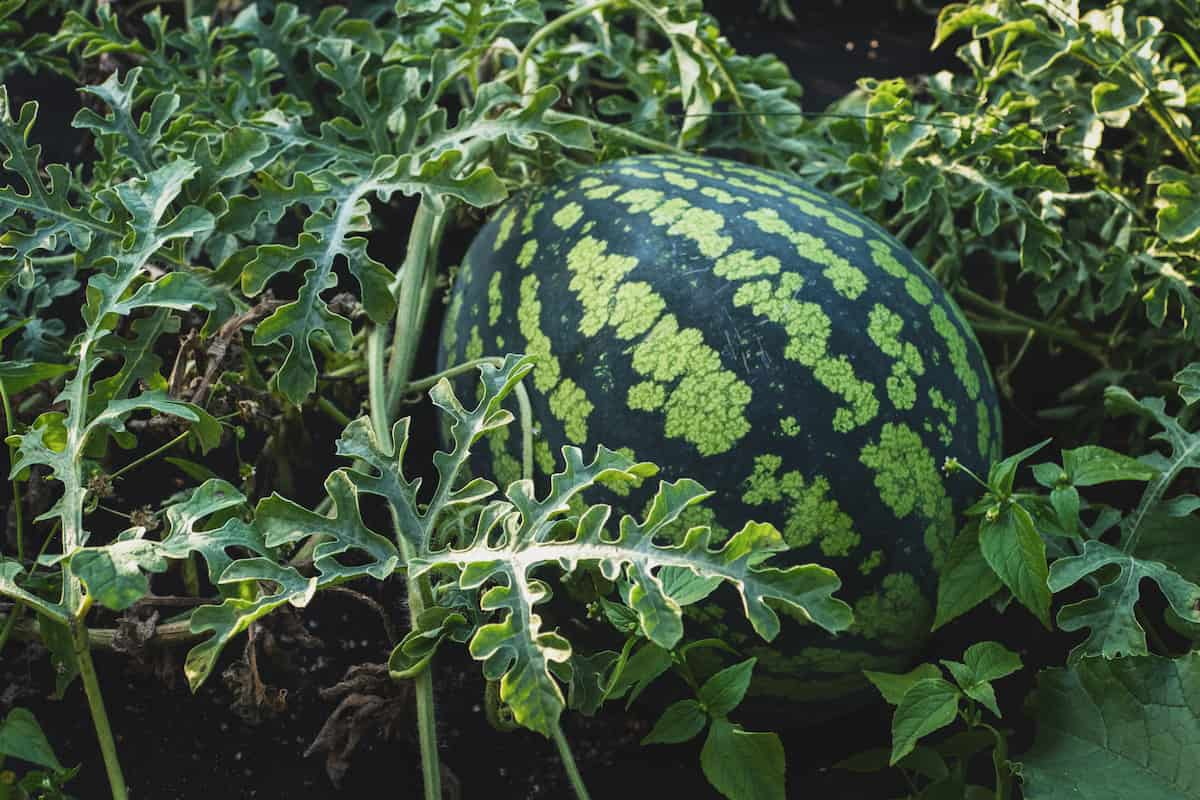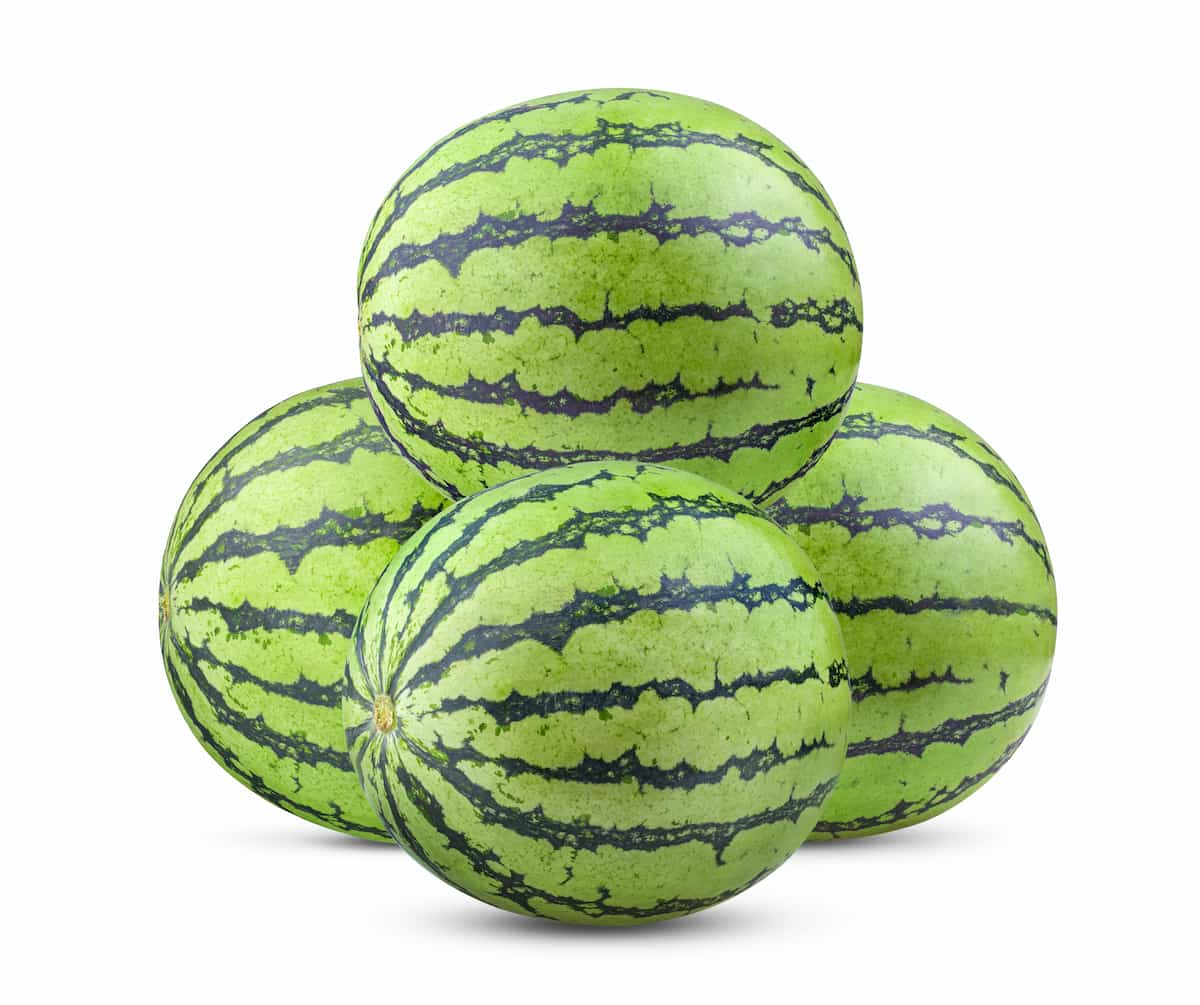Arizona, a southwestern state in the United States, is known for its warm and dry climate. Despite its arid nature, Arizona offers unique opportunities for agriculture, particularly for crops that can tolerate high temperatures and minimal water usage. One such crop is watermelon, which is not only a delicious and nutritious fruit but also a valuable cash crop.

Below we learn how to start watermelon farming from seeds in Arizona by understanding the climate, selecting the right seeds, preparing the land, watermelon growth stages, and implementing the best cultivation practices.
How to Start Watermelon Farming in Arizona
Understanding the Climate for Watermelon Farming
Arizona has burning summers, moderate winters, and little rainfall. The state experiences over 300 days of sunshine annually, with temperatures often exceeding 100°F (38°C) during summer. Although watermelon is a warm-season crop, it can be sensitive to extreme heat. To ensure successful watermelon farming in Arizona, it is crucial to understand the specific climate requirements for watermelon growth.
- Temperature: Watermelons thrive between 70-90°F (21-32°C). Temperatures above 95°F (35°C) can stress the plants and lead to poor fruit development. In Arizona, it’s crucial to plant watermelons early in the season to avoid the hottest summer months.
- Sunlight: Watermelon plants require full sun for optimal growth. Ensure your planting site receives at least 6-8 hours of direct sunlight daily.
- Water: While watermelon plants are relatively drought-tolerant, they require consistent irrigation, especially during the fruiting stage. In the arid Arizona climate, efficient water management is essential to prevent water waste and maintain healthy plants.
Selecting the Right Watermelon Variety
There are numerous watermelon varieties available, each with its unique characteristics. When selecting a variety for your Arizona farm, consider the following factors:
- Heat tolerance: Opt for heat-tolerant varieties that withstand Arizona’s high temperatures. Some popular heat-tolerant watermelon varieties include ‘Crimson Sweet,’ ‘Desert King,’ and ‘Sugar Baby.’
- Disease resistance: Choose watermelon varieties resistant to common diseases such as anthracnose, fusarium wilt, and gummy stem blight.
- Size and taste: Consider your target market’s fruit size and taste preferences. Smaller, personal-sized watermelons like ‘Sugar Baby’ may appeal more to urban consumers, while larger varieties like ‘Crimson Sweet’ may be more suitable for wholesale markets.
Preparing the Land for Watermelon Farming
- Soil testing: Test the soil to determine its pH, nutrient levels, and any potential contaminants. Watermelon prefers a slightly acidic to neutral soil pH of 6.0-7.0.
- Soil preparation: Watermelons grow best in well-draining, sandy loam soils. If the soil is heavy clay or hard, add organic matter like compost or old dung to improve draining and aeration.
- Weed control: Eliminate weeds from the planting site before planting, as they compete with watermelon plants for water, nutrients, and sunlight.
- Fertilization: Based on your soil test results, apply the appropriate nutrients to the soil. Watermelon plants require adequate nitrogen, phosphorus, and potassium for healthy growth and fruit development.
Planting Watermelon Seeds and Transplants
- Seed germination: Start watermelon seeds indoors for approximately 3-4 weeks before transplanting them outside. Plant seeds in peat pots or trays filled with a well-draining seed-starting mix. Keep the growing medium moist and maintain temperatures between 75-85°F (24-29°C) to encourage germination.
- Transplanting: Transplant watermelon seedlings outdoors once they have developed at least two true leaves and the danger of frost, has passed. Before transplanting, harden the seedlings for a week outdoors.
- Plant spacing: Space watermelon plants 3-5 feet (0.9-1.5 meters) apart within rows and 6-8 feet (1.8-2.4 meters) between rows. This spacing ensures adequate airflow, minimises resource competition and facilitates proper vine growth.
In case you missed it: Hydroponic Watermelon Farming in a Greenhouse: Key Rules to Start from Scratch

Watermelon Irrigation and Water Management
- Irrigation methods: Watermelon cultivation in Arizona is most effective using drip irrigation, which provides water straight to the root zone and reduces evaporation. Overhead irrigation should be avoided, as it can promote disease development and waste water through evaporation.
- Watering frequency: Watermelon plants require consistent moisture, particularly during fruit set and development. In Arizona’s arid climate, monitoring soil moisture and irrigating accordingly is crucial. Generally, watermelon plants require 1-2 inches (2.5-5 cm) of water per week.
- Mulching: Organic mulch like straw or wood chips around watermelon plants conserves soil moisture, suppresses weeds, and regulates soil temperature.
Pest and Disease Management
- Integrated Pest Management (IPM): Implement an IPM strategy to minimize pest and disease issues in your watermelon crop. This involves scouting for pests, using biological controls, applying chemical controls only when necessary, and employing cultural practices to prevent disease development.
- Common pests: Some common watermelon pests in Arizona include aphids, squash bugs, and spider mites. Inspect your plants for pests and apply insecticidal soap, neem oil, or other remedies.
- Disease prevention: Rotate watermelon crops with non-cucurbit crops to reduce disease incidence. Also, practice good sanitation by removing plant debris and using clean tools to minimize the spread of pathogens.
Nutrient Management and Fertilization
- Side dressing: Apply additional nitrogen fertilizer in ammonium nitrate or a slow-release fertilizer when the watermelon vines begin to run (approximately 30-45 days after planting). This provides the necessary nutrients for vigorous vine growth and fruit development.
- Foliar feeding: Apply foliar fertilizers containing micronutrients, such as zinc, manganese, and boron, to boost watermelon plant health and address potential deficiencies.
- Monitoring nutrient levels: Regularly test your soil and leaf tissue to monitor nutrient levels and adjust your fertilization program accordingly.
Harvesting and Storing Watermelons
- Harvesting: Watermelons are typically ready for harvest 75-100 days after planting, depending on the variety. Signs of ripeness include a dull, matte finish on the fruit’s surface, a creamy yellow spot where the fruit rests on the ground, and a hollow sound when the watermelon is tapped.
- Storage: Store harvested watermelons in a cool, well-ventilated area with temperatures between 50-60°F (10-15°C) and relative humidity around 85-90%. Proper storage conditions can help maintain the quality and shelf life of the fruit.
In case you missed it: Seedless Watermelon Farming: A Step-By-Step Guide for Seed to Harvest

Conclusion
Watermelon farming in Arizona’s desert climate can be rewarding and profitable with the right preparation and cultivation practices. By understanding the climate requirements, selecting heat-tolerant varieties, preparing the land, and implementing effective irrigation and pest management strategies, you can successfully grow watermelons in Arizona and enjoy the sweet taste of success.
- Feed Your Flock for Less: Top 10 Tips to Save on Chicken Feed
- Ultimate Guide to Ossabaw Island Hog: Breeding, Raising, Diet, and Care
- Hatching Answers: The Top 10 Reasons Your Chickens Aren’t Laying Eggs
- Eggs and Economics: Breaking Down the Cost of Raising Backyard Chickens
- Defend Your Greens: Proven Methods to Keep Iguanas Out of Your Garden
- Ultimate Guide to Cinnamon Queen Chicken: A Comprehensive Guide for Beginners
- Ultimate Guide to California Tan Chicken: Breeding, Raising, Diet, Egg-Production and Care
- Ultimate Guide to Marsh Daisy Chicken: Breeding, Raising, Diet, and Care
- 10 Types of Chicken Farming Businesses You Can Start for Profits